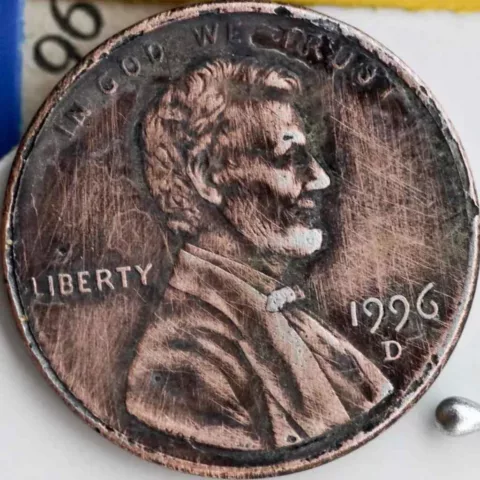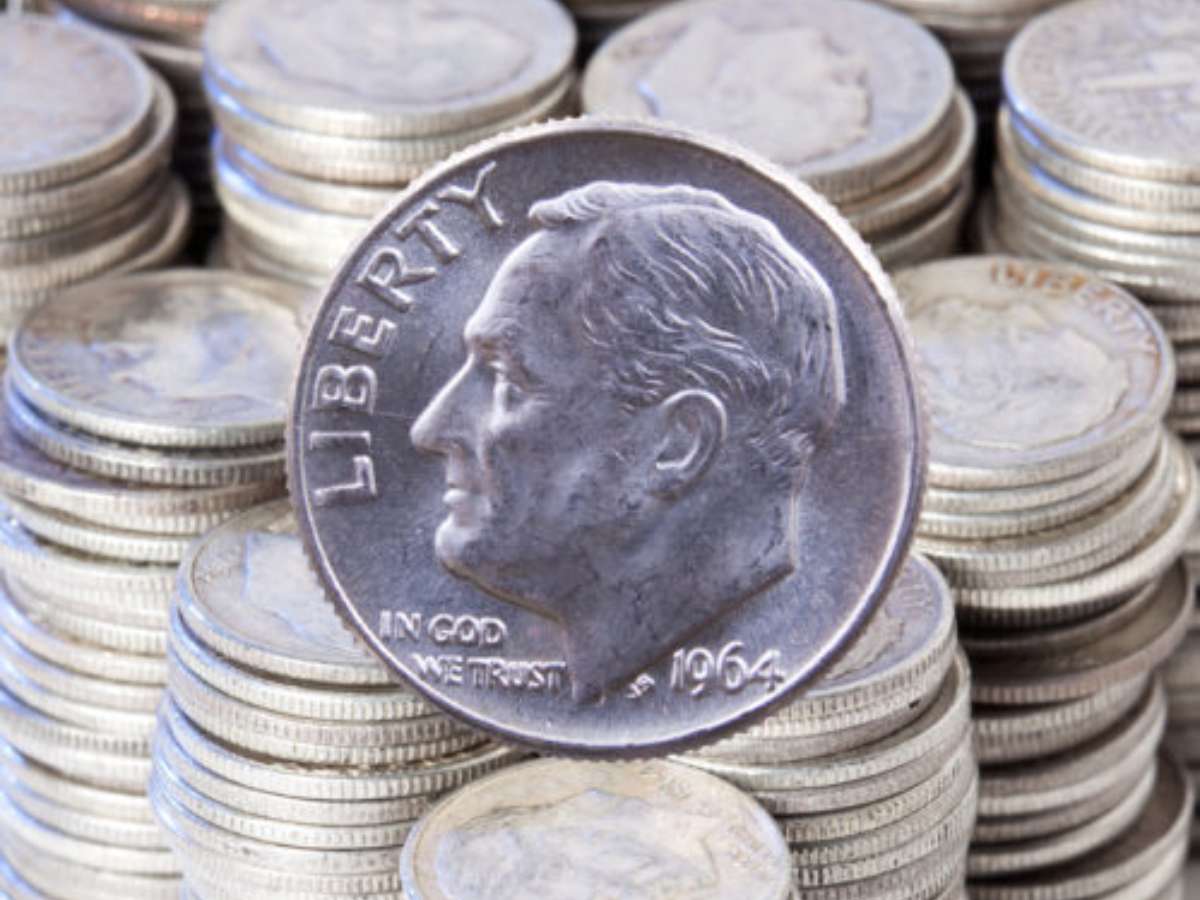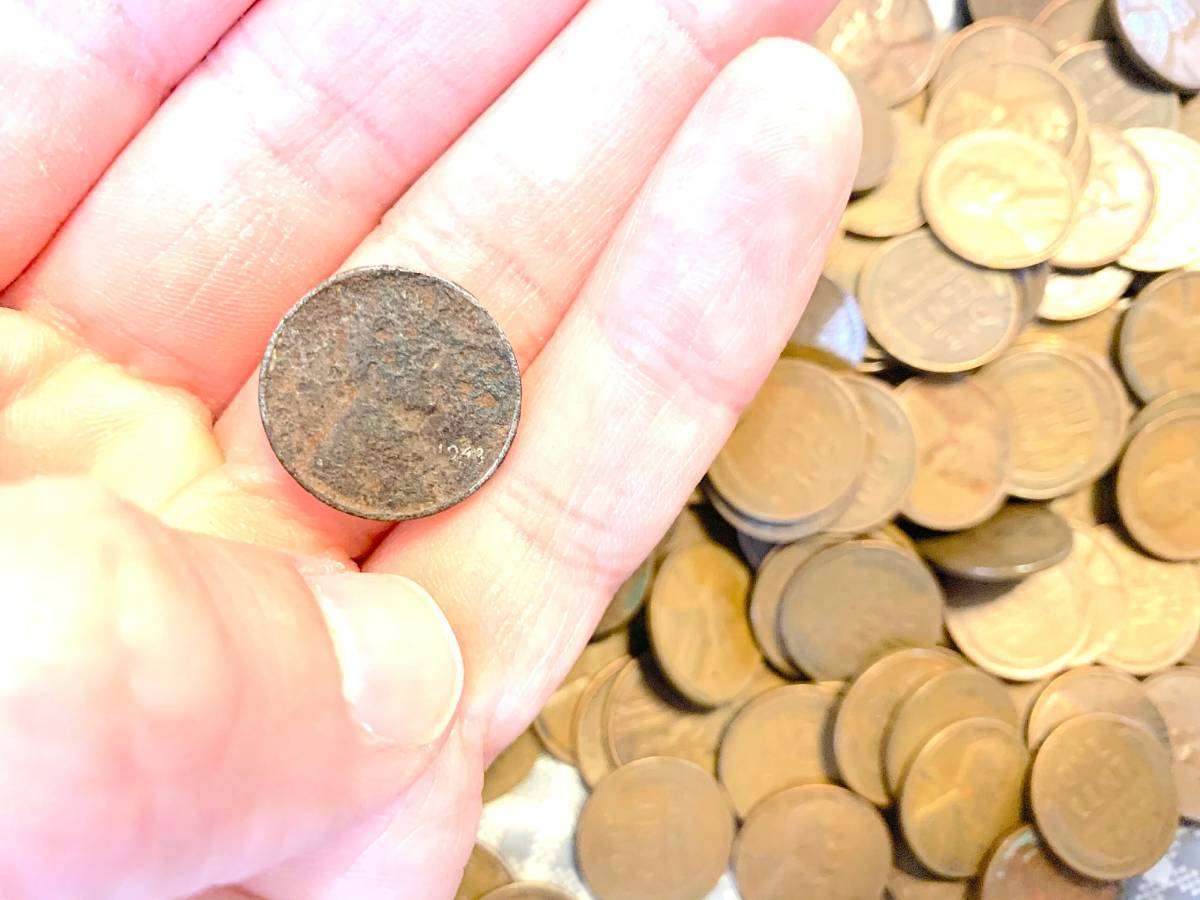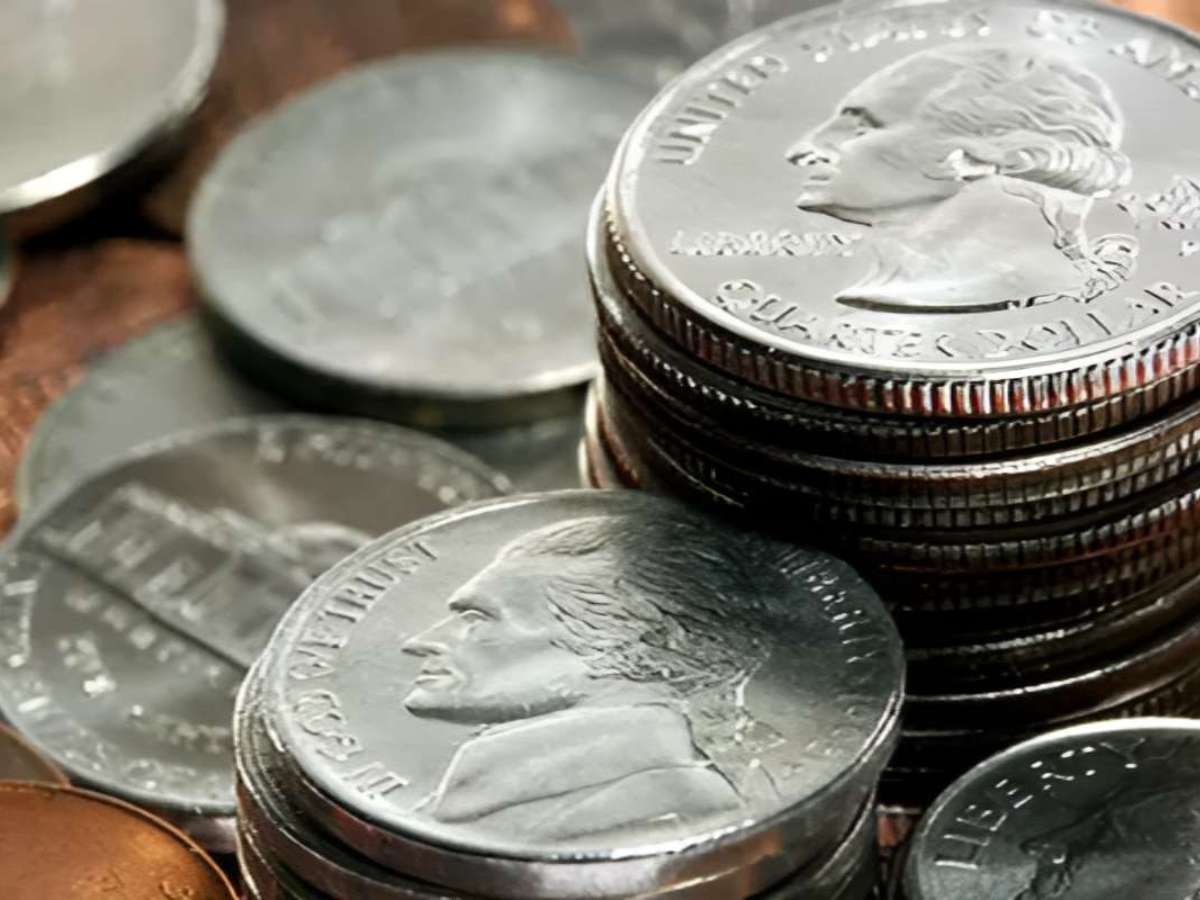
Did you know that lots of 1996 pennies are worth more than their face value of one cent?!
So… how can you tell if you have a valuable 1996 penny or one that you can spend as regular money?
Today we’re going to tell you exactly which 1996 Lincoln pennies are rare and valuable — and how much your 1996 pennies are worth!
1996 Penny Value (no mintmark)
The 1996 penny without a little letter under the date (which is called a mintmark) was struck at the Philadelphia Mint — where 6,612,465,000 pennies were made that year. With a mintage of more than 6.6 billion — with a big ol’ “B” — coins, the 1996 penny from the Philadelphia Mint can hardly be considered scarce.
Unfortunately, most 1996 pennies that you find in pocket change are likely to be worth just their face value, or one cent. That’s because worn Lincoln cents from the 1990s are so common.
However, if you happen to find a 1996 penny with an error or variety, it can be worth much more — and that’s something we’ll cover in greater detail a little later in this post.
The bottom line is if your 1996 penny without a mintmark is worn, discolored, or damaged with scratches and nicks… it’s safe to spend at face value.
What about 1996 pennies that aren’t worn and dinged?
If you’ve got an uncirculated 1996 no mintmark penny that looks about as new as the day it was minted, it could be worth much more:
- A typical 1996 penny without a mintmark in uncirculated condition is worth 10 to 30 cents.
- The record price for a 1996 penny without a mintmark is $2,500 — which was paid in 2018 for a specimen that Professional Coin Grading Service graded MS68+RD.
1996-D Penny Value (“D” mintmark)
The 1996-D penny has a little “D” mintmark letter under the date — signifying that it was struck at the Denver Mint in Colorado.
The Denver Mint produced a whopping 6,510,795,000 Lincoln Memorial cents with the 1996-D date and mintmark. Of course, with a mintage figure that big it’s pretty hard to consider 1996-D pennies rare coins.
Most 1996-D pennies you find in spare change are going to be worn, discolored, or damaged. Any 1996-D pennies like that are worth face value — just one cent — and are safe to spend. In fact, pretty much all 1996-D pennies you find in circulation that don’t look as shiny and new as the day they were minted are worth only a penny. Again, these are relatively common coins.
But there really are some 1996-D pennies worth saving:
Those that are in mint-fresh uncirculated condition are worth around 10 to 30 cents.
The most valuable 1996-D Lincoln penny ever sold was graded MS69RD by Professional Coin Grading Service and fetched a remarkable $3,565 in a 2008 auction.
1996-S Penny Value (“S” mintmark)
The United States Mint struck a small number of 1996-S Lincoln pennies made especially for coin collectors.
These special 1996-S pennies are known as proofs. They were struck by specially prepared dies on high-tonnage coin presses and produced with highly polished coin blanks. These coins were struck twice to bring up even the most minute of details and possess reflective surfaces with frosty designs and lettering.
The U.S. Mint struck 2,525,265 of these 1996 proof pennies — which bear the little S mintmark indicating their origin at the San Francisco Mint. They were sold in small sets of proof coins representing the other circulating denominations produced that year. No 1996-S pennies were released by the U.S. Mint into circulation, although some may have been broken out of their government packaging and spent as regular money. (This has happened to a lot of proof coins over the years.)
While you can buy a 1996 proof set from a coin dealer for around $7 to $10, you can purchase an individual 1996-S proof penny for approximately $2 to $5.
The most valuable 1996-S proof penny was graded PR70DCAM by Professional Coin Grading Service and sold for $1,610 in a 2003 auction.
IMPORTANT: What Is The Grade Of Your 1996 Penny?
To determine the true value of your 1996 Lincoln cent, you first need to know what condition (or grade) your coin is in.
Grab a coin magnifier and a copy of the U.S. Coin Grading Standards book. Then, watch this video to see how to grade coins yourself at home:
These coin grading apps make grading coins yourself much easier.
A List Of Rare 1996 Penny Errors… And Their Values
Not all 1996 pennies were made just to a tee! Many contain striking errors or varieties that are both rare and valuable.
Bear in mind… most of the weird-looking 1996 Lincoln cents you find in pocket change contain one form or another of post-mint damage and aren’t worth anything extra.
So, what are some of the valuable 1996 penny errors worth looking for?
Here are 3 of the most popular 1996 error pennies that you can find in spare change:
1996 Doubled Die Penny Error
Even if you haven’t been into coin collecting very long, you probably know about doubled die pennies — which are correctly called doubled dies.
While some doubled die error pennies are worth hundreds or even thousands of dollars, the 1996 doubled die pennies aren’t worth that much because they’re generally obscure varieties with minor doubling.
Pieces with minor doubling (especially if it can’t readily be seen with the naked eye) don’t usually bring in the big bucks. But 1996 doubled die pennies are still worth looking for!
You are most likely to spot one with doubling in Lincoln’s eye, on his tie, or among the columns of the Lincoln Memorial. Many 1996 doubled die pennies are worth between $20 and $50.
1996 Off-Center Penny Error
Talk about a striking error — in more ways than one!
When a coin isn’t struck perfectly on center by the dies, the coin will be missing part of its design. Some of these off-center errors are missing only 1% or 2% of their design, while others are missing 50% or more.
A 1996 penny that’s less than 3% off center really won’t garner much extra value, but one that’s 5% to 10% or more will be worth around $10 and up.
The most valuable kind of 1996 off-center penny is one that is about 50% off center but still shows a complete date and (if applicable) mintmark. These can bring $50 to $100… or even more!
1996 BIE Penny Error
Sometimes when a die gets old or over worn, it will begin cracking — and breaks will appear on the struck coin as raised lines. While die break varieties can appear on any coin, there’s a particular kind that is unique to Lincoln cents. It’s known as the BIE error.
A BIE error is a small, vertical die crack that looks like a blobby capital letter “I” and appears between the “B” and “E” of the inscription “LIBERTY.”
Values for BIE error pennies depend on the appearance of the die crack and the condition of the coin. Most range between $5 and $15 in value.




